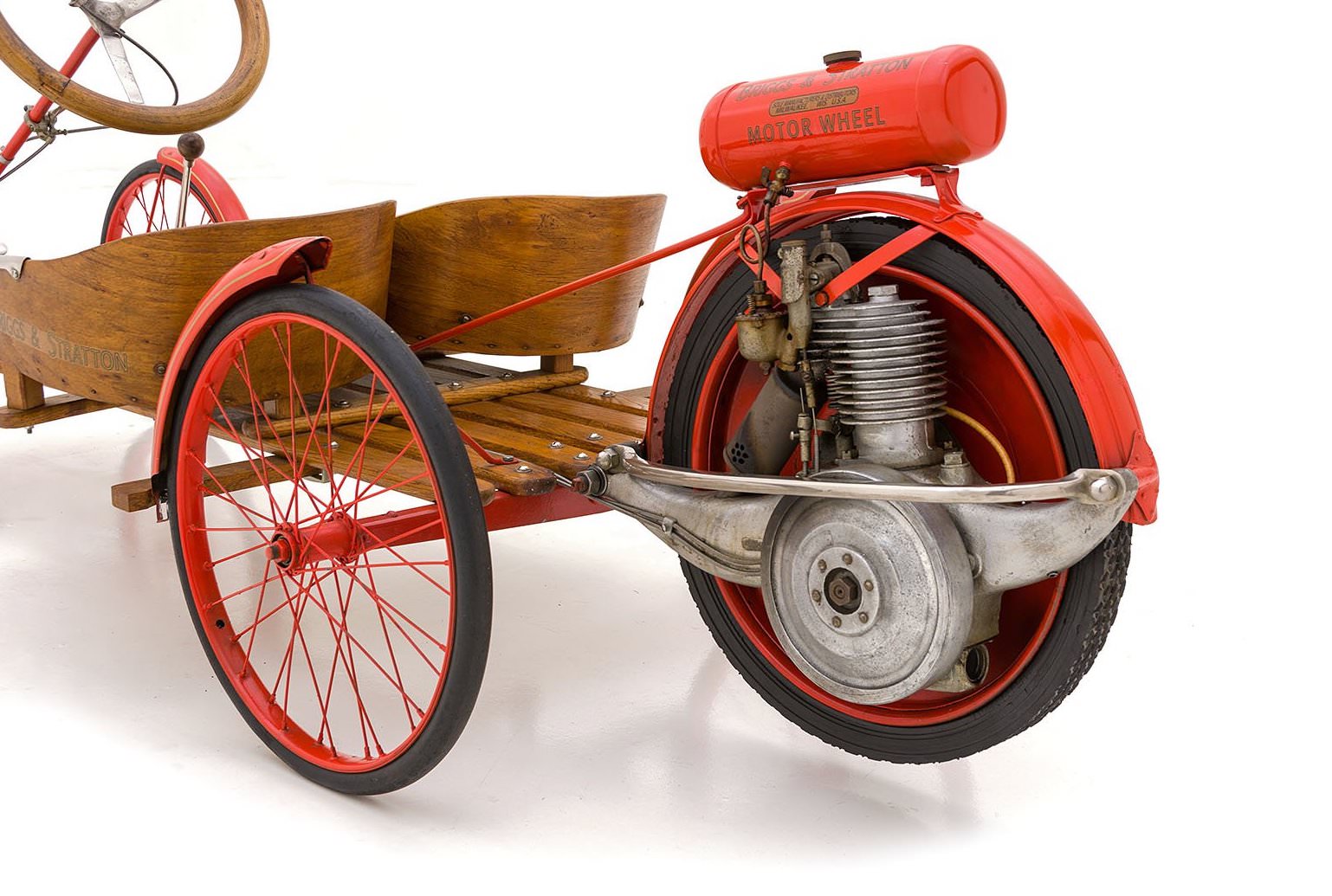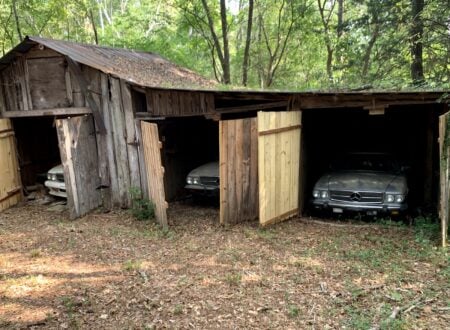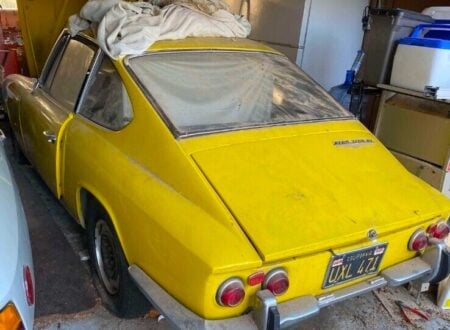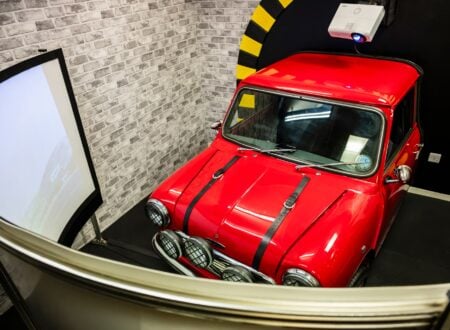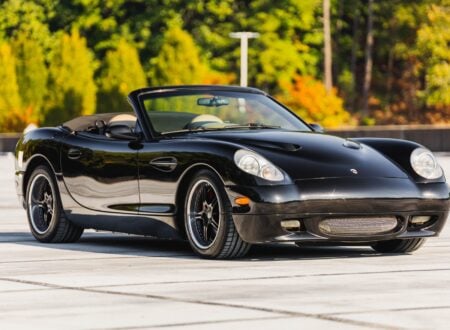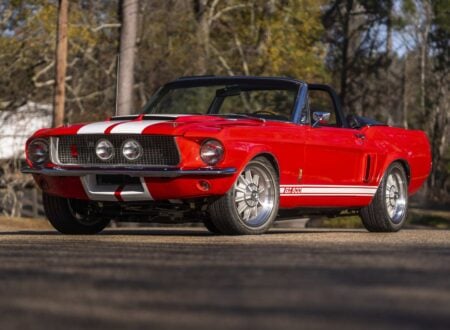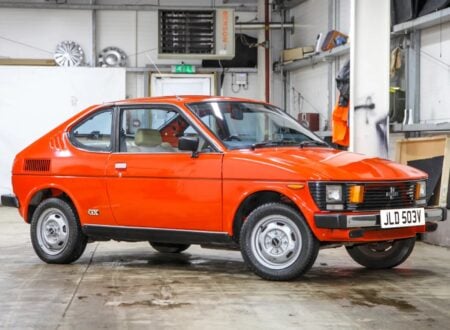The Auto Red Bug was introduced back in the 1910s as the “Smith Flyer,” it had been developed to fill the need for an exceedingly cheap, no-frills automobile by A.O. Smith – a company that made water heaters and boilers but became the biggest American bomb maker during WWI.
The early 20th century was a time of rapid development in the automotive world, some manufacturers made luxury cars, some made fast cars, and some made cheap cars – the Smith Flyer was the cheapest of them all with an MSRP of just $125 USD.
Fast Facts – The Auto Red Bug
- Originally known as the Smith Flyer, the Auto Red Bug was created by A.O. Smith in 1914. It has a simple buckboard wooden chassis with steel reinforcements, seating for two, and either an electric or gasoline motor.
- The Auto Red Bug cost $125 USD when it was new, the Model T Ford sold for $265 USD at the time. The Guinness Book of World Records lists the Auto Red Bug as the least expensive production car of all time.
- The electric version of the vehicle used a 12 volt Dodge starter motor linked to lead acid batteries. The most popular gasoline version used a Briggs & Stratton Motor Wheel mounted in the rear.
- The Briggs & Stratton-powered version of the Auto Red Bug had a top speed of 16 mph, 3 bhp, no suspension, and very limited braking ability.
The Smith Flyer And The Auto Red Bug
When the A.O. Smith company developed the Smith Flyer in 1914 WWI had just started across the Atlantic and the Model T Ford, which had been released six years earlier, was the best selling car in the United States. During the war much of the A.O. Smith production line was re-tasked for the war effort, and so instead of mass-producing boilers they were mass-producing bombs.
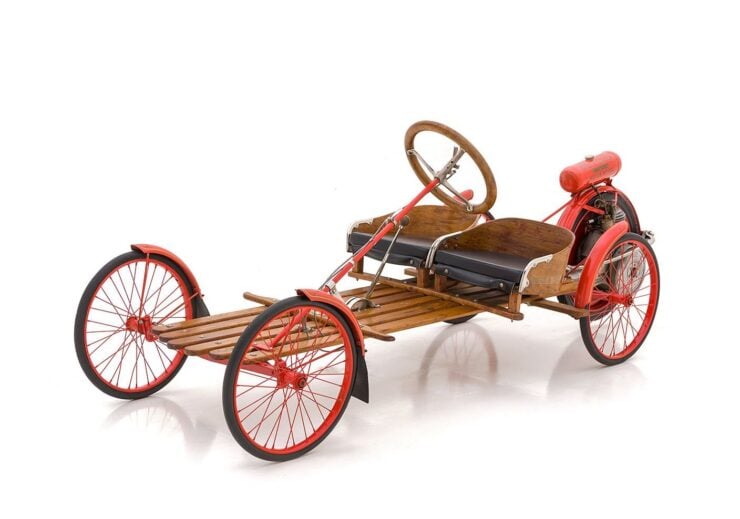

During the war years there was a strong demand for affordable transportation, combined with an extreme shortage of materials like steel, rubber, and gasoline. An enterprising group of engineers set about trying to solve this problem by creating the least expensive car in world history – a car that would require minimal amounts of steel, rubber, and gasoline.
Their creation was called the Smith Flyer, after the A.O. Smith company of course, and it consisted of a wooden chassis made of buckboards, steel reinforcements, two seats, two axles with spoked wheels and small tires, and a small rear mounted motor. The use of wood for most of the car’s construction made it easy and affordable to build and the longitudinal flexibility of the planks actually gave it some rudimentary suspension.
After keeping the Smith Flyer in production for a few years the rights to the design were sold to Briggs & Stratton in 1920, who modified it to be powered by their own “Motor Wheel,” a self-contained motor and wheel that could be fitted to a bicycle to provide instant motorization.
Under its new ownership the Flyer was renamed the Briggs & Stratton Auto Red Bug, it could be bought in high-end stores like Abercrombie & Fitch and F.A.O. Schwartz, and despite its original design intention to be a cheap car for people to use for transportation, it became a favorite plaything of the rich.
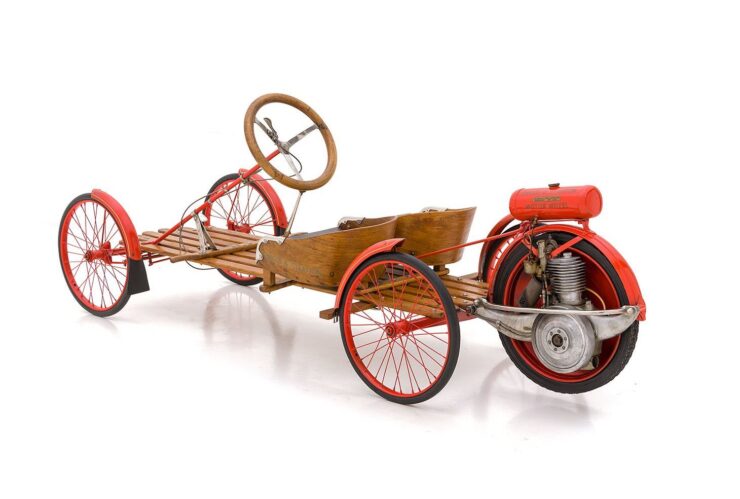

The design was later sold on to the Automotive Electric Services Company which produced an electric version powered by a 12 volt Dodge starter motor which was mounted in the rear and linked to lead acid batteries. This almost certainly means the the simple little Smith Flyer was both the cheapest gasoline automobile and the cheapest electric automobile in history.
The Briggs & Stratton Auto Red Bug Shown Here
The Briggs & Stratton Auto Red Bug you see here has been fully restored, it has a re-varnished wood chassis and the classic red wheels and other metal work that you would expect.
It’s powered by a Briggs & Stratton Motor Wheel, rather than a traditional clutch the motor and wheel is elevated off the ground when the car comes to a halt, it keeps spinning and is then lowered back down when the driver wishes to get underway again.
With an asking price of $22,500 USD this unusual little microcar is a relatively affordable piece of automotive history, albeit one you likely won’t win any races in.
If you’d like to read more about it or register to bid you can click here to visit the listing on Hyman Ltd.
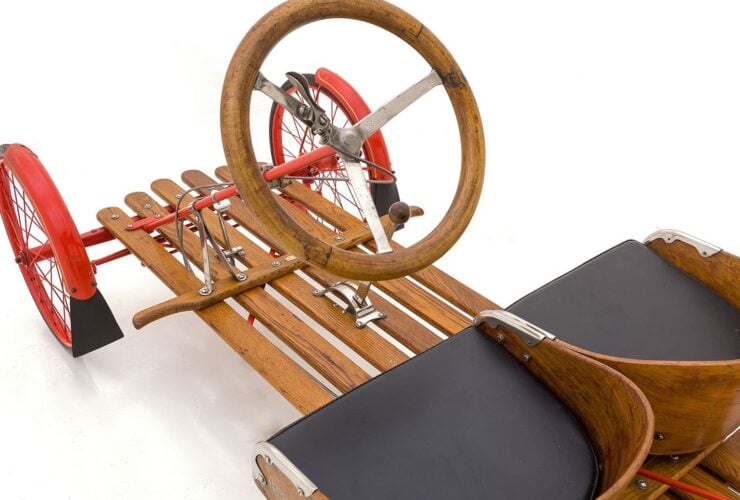
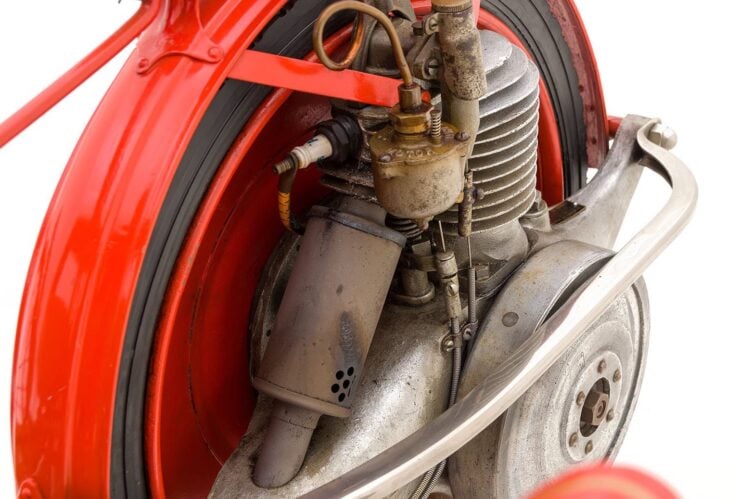
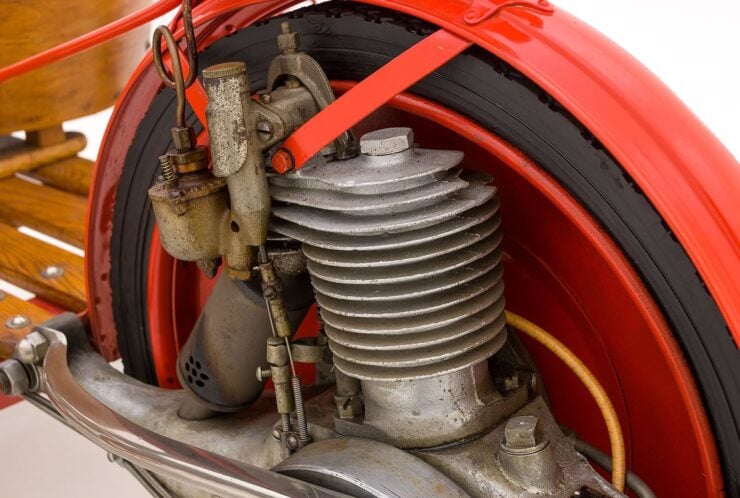

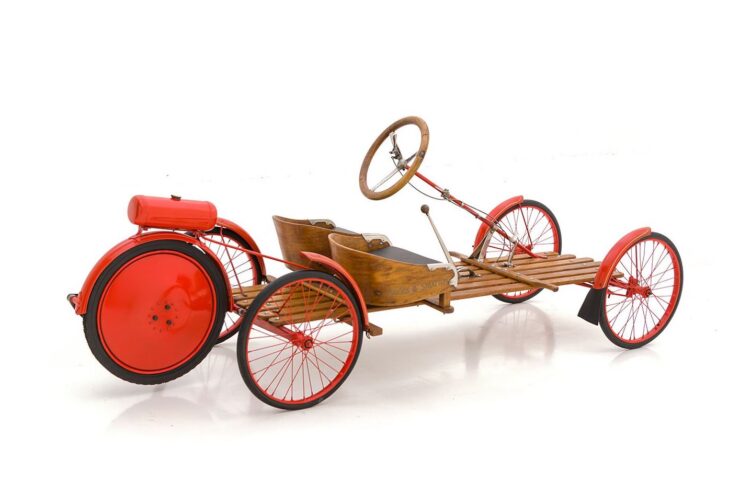
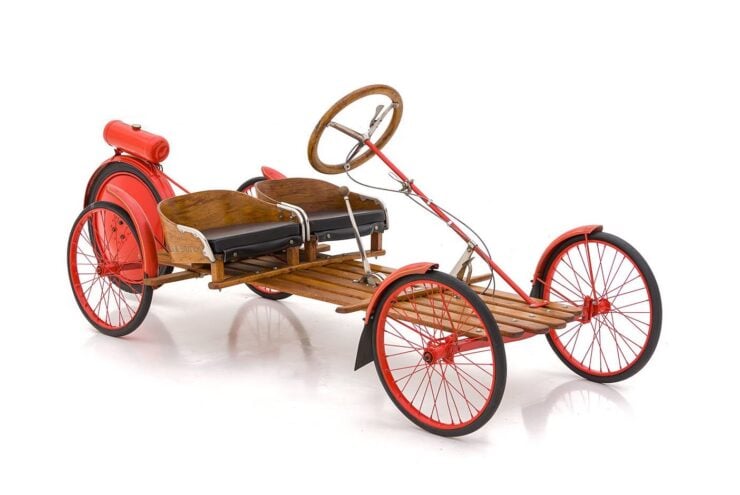
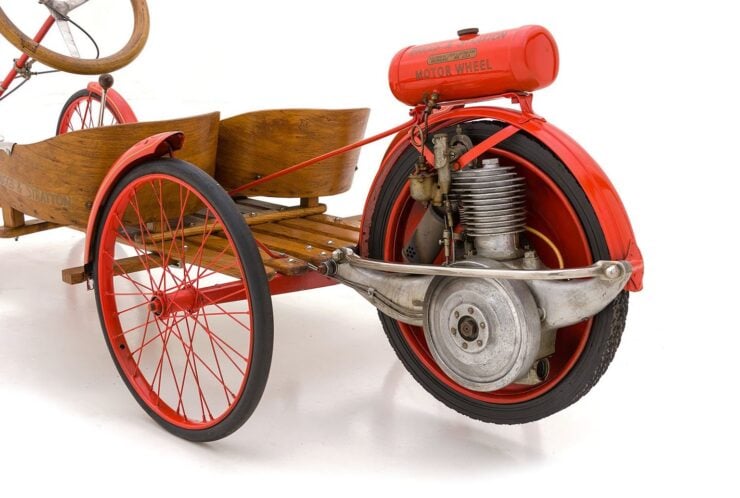
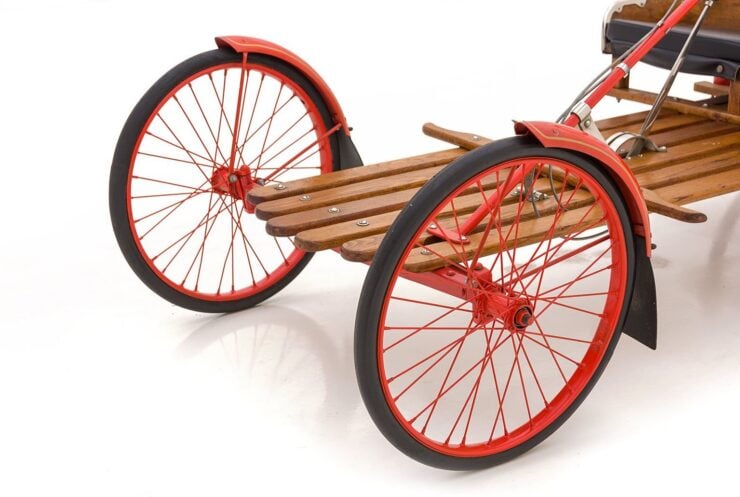
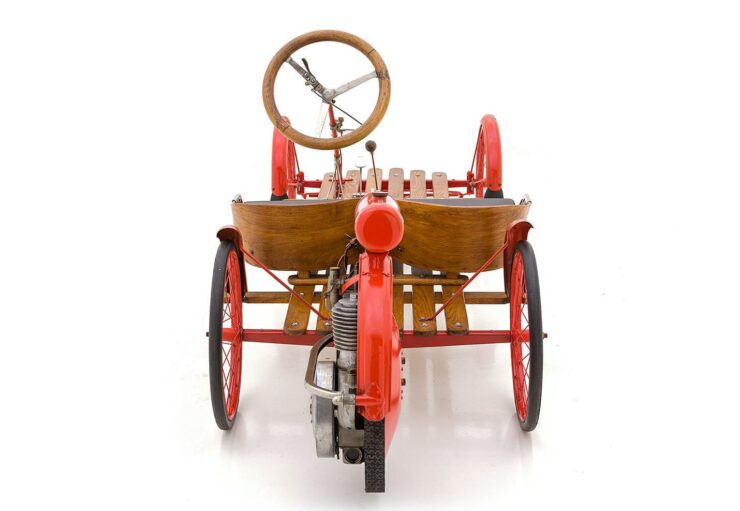
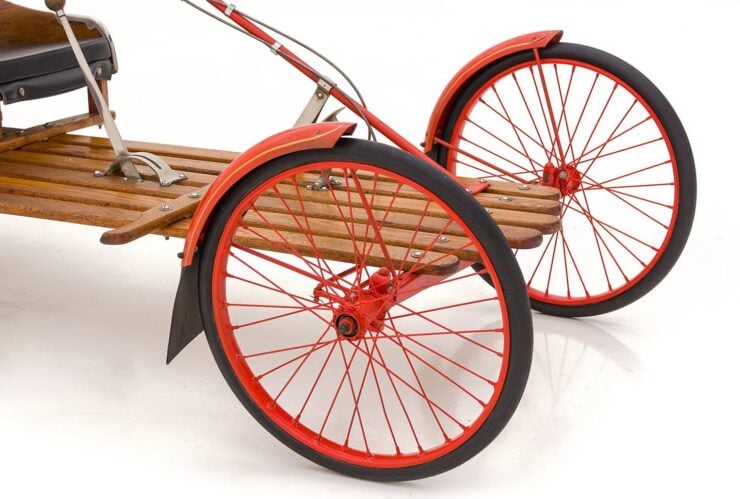
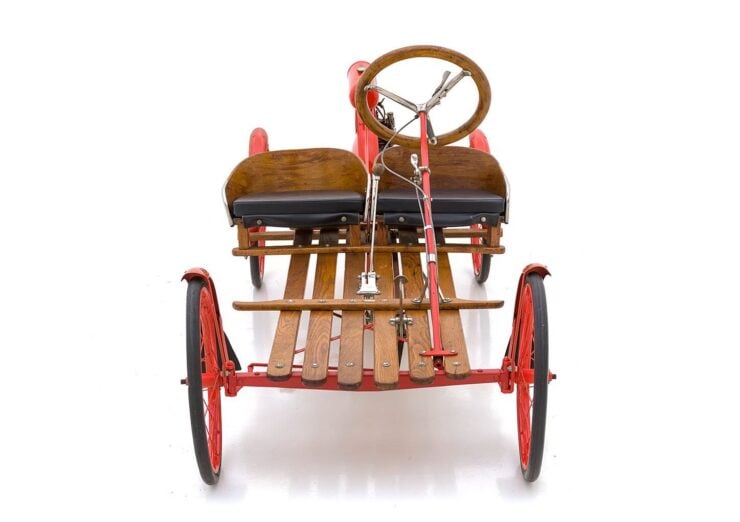
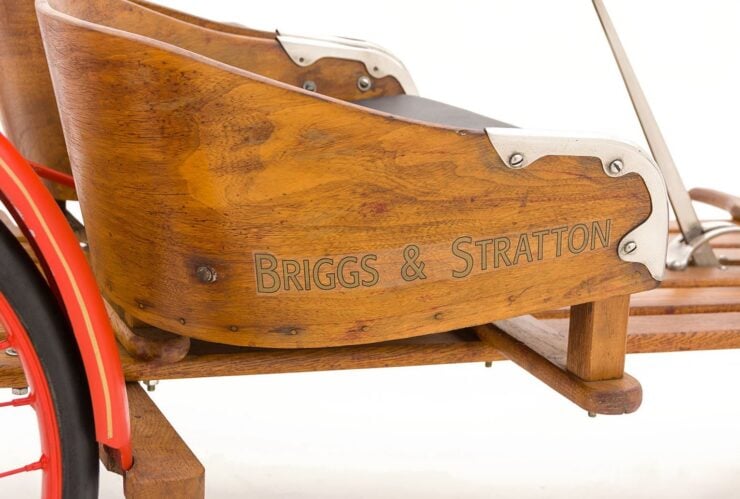
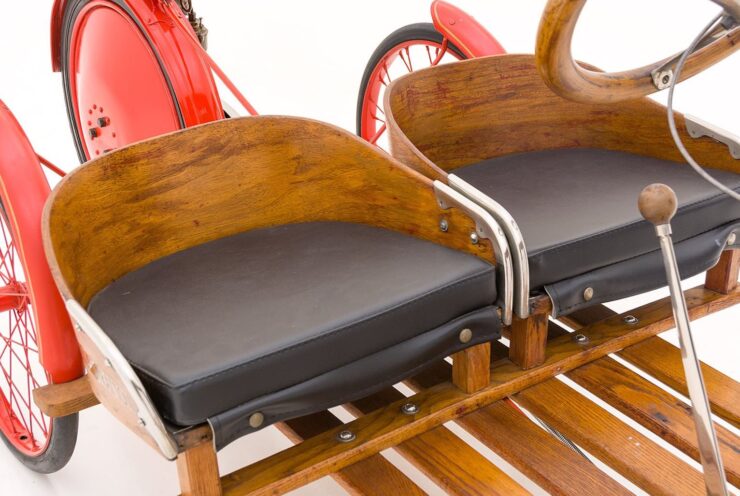
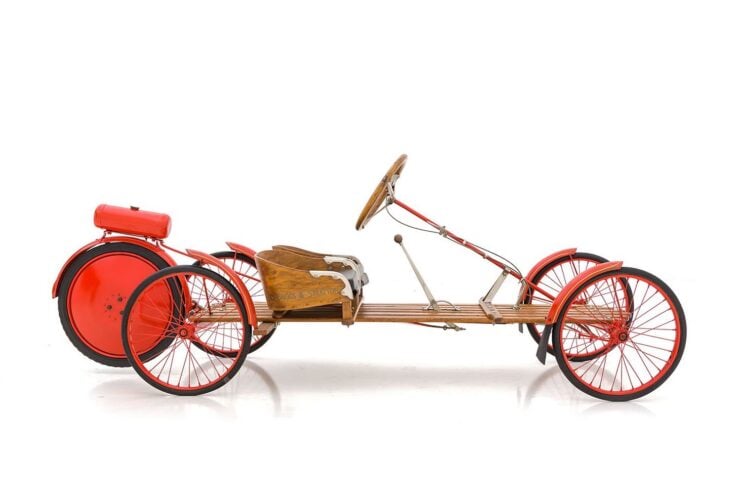
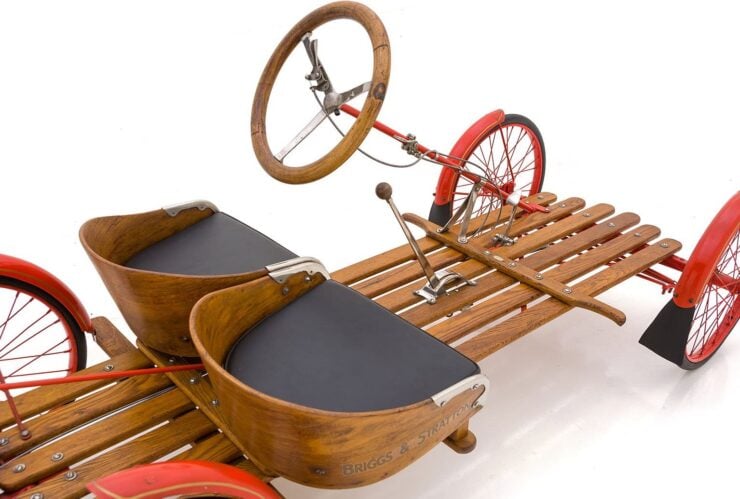
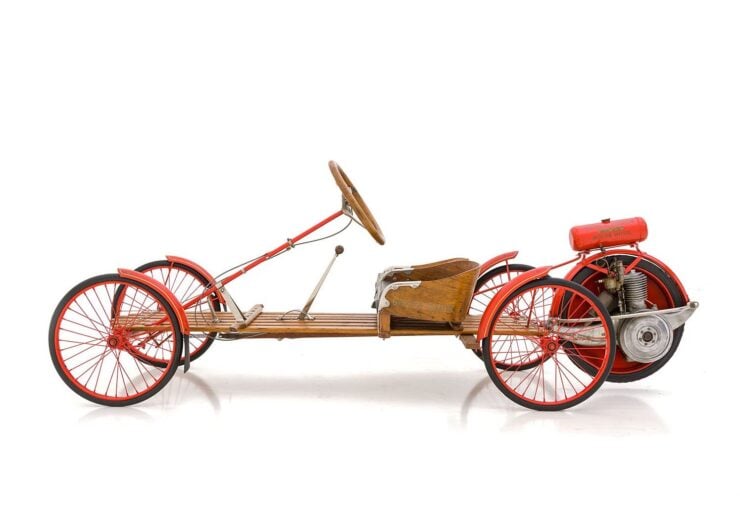
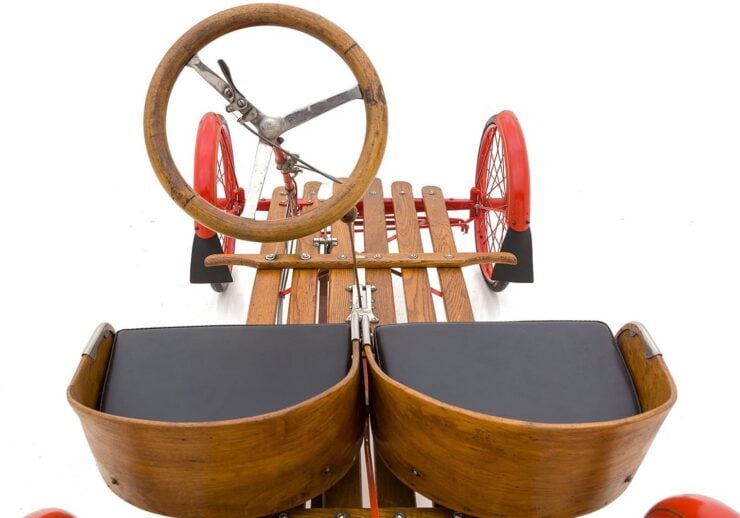
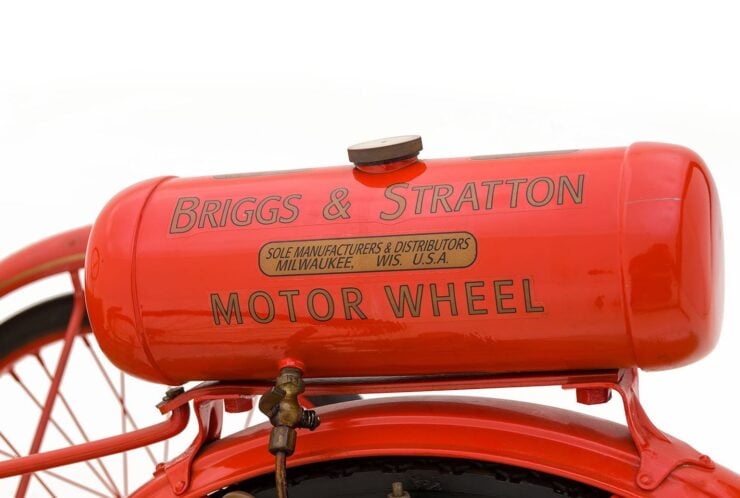
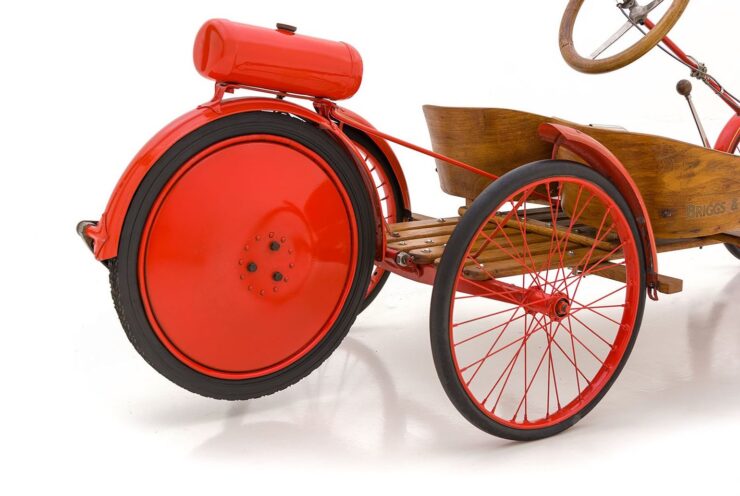


Images courtesy of Hyman Ltd.

